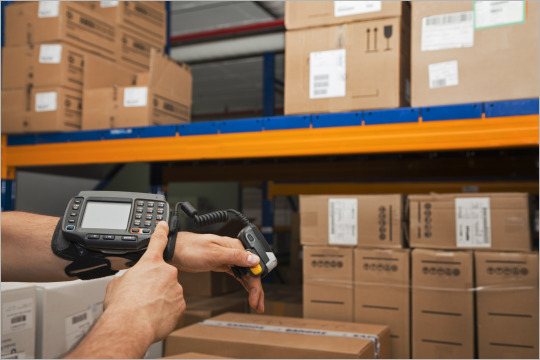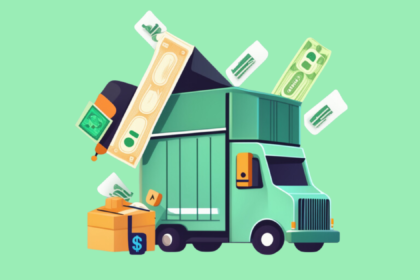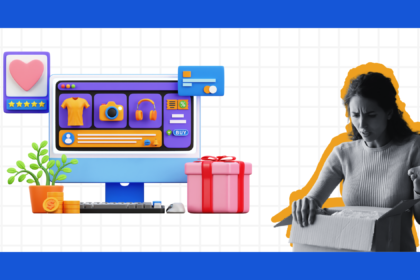A customer lands on your e-commerce store, browses your products, adds an item to their cart, hits “buy now,” and completes the payment. It feels like the finish line, right? Hold on, in reality, that’s just the starting gun for another race: the post-purchase journey.
Post-purchase journeys are focused on getting that product into your customer’s hands, supporting them as they experience it, handling returns if things don’t quite work out, and ultimately, building a lasting relationship with them.
Post-purchase can sometimes feel like a bit of a freefall. You’ve poured your heart and soul into crafting the perfect online store and the elements surrounding it. Suddenly, it seems like you’re losing control. Shipping, delivery, and returns – these are often handled by third-party providers, leaving you with less influence over the process and the customer experience.
When you understand each stage of the post-purchase process and the customer pain points, you can gain more control and create enjoyable post-purchase experiences for your customers.
Read on to find out how the post-purchase process shapes the overall customer experience and how you can measure its effectiveness to drive customer loyalty and boost your bottom line.
What is Post-Purchase?
Post-purchase is that part of the customer journey that begins immediately after a customer clicks the “buy” button. This includes every stage, from order confirmation and shipping updates to delivery, returns, and customer support interactions. It’s basically everything that happens after the sale is made.
The after-purchase experience is an opportunity to build relationships with your customers, foster loyalty, and encourage repeat business. This is when you can make your customers feel valued and appreciated after they’ve made their purchase.
The post-purchase journey is invaluable to e-commerce businesses because it:
- Reduces customer churn: Addressing any issues or concerns promptly and effectively can help prevent customers from switching to competitors.
- Boosts repeat purchases: By providing a seamless and enjoyable experience, you can increase the likelihood of customers making repeat purchases.
- Drives customer retention and loyalty: A positive post-purchase experience encourages customers to return for future purchases and become loyal brand advocates.
- Enhances brand reputation: A positive post-purchase experience contributes to a positive brand image and fosters trust among potential customers.
Stages of the Post-Purchase Process
Let’s now break down the post-purchase process into various stages to see what matters to the customer at each stage and how you can enhance customer experience.
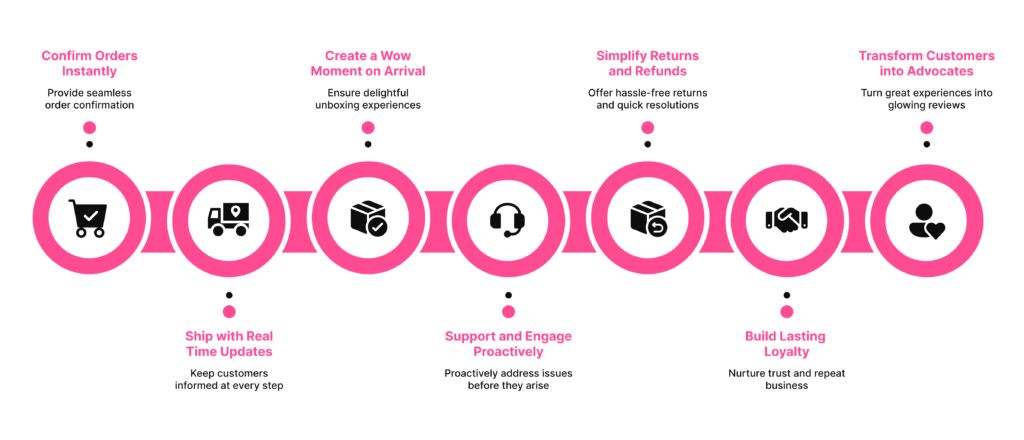
1. Order confirmation
This stage begins right after the customer clicks the “Buy Now” button and pays for their order. At this stage, the customer needs reassurance that you’ve received their payment and that you’ll be handling their order with care. Post-purchase communication begins at this stage—where brands reach out to customers at this point and set the tone for a positive experience.
To provide customers with a good experience at this stage:
- Provide instant order confirmation immediately after you receive the order. Make sure this email or confirmation page has all their order details.
- You can also provide a tracking link on the confirmation page so that customers can monitor the status of their order.
- This is also the perfect time to set expectations about delivery times. Doing so can help you reduce the number of related support tickets and complaints later on.
2. Order fulfillment and shipping
The next stage in the post-purchase process is preparing and shipping the order. At this stage, the customer is anxiously waiting for their purchase and wants updates about what is going on. If the customer has to reach out to you every time they need an update about their order, it sets a bad precedent. Instead, reach out to them first.
You can manage your customers’ delivery experience with proactive post-purchase communications. Provide your customers with regular shipping updates through email and SMS. You can automate these shipping notifications and use branded order tracking pages for a more curated experience.
At this stage, as you pack the order, prioritize protection and presentation. You can also add personalized touches to the packaging so that the next stage of this journey is more enjoyable for the customer.
3. Order delivery and unboxing
At this stage, the customer receives the order. Here, timely deliveries help form the first impression the customer has about your brand. While we must prioritize timely deliveries by choosing delivery partners who can meet this demand, delays are unavoidable in some cases. When shipping delays occur, monitor these delivery exceptions and proactively alert customers. This reduces the frustration customers may feel and helps them manage expectations.
Now, customers start forming their initial impressions about your product from the moment they set eyes on the package. So, ensure that the package arrives in good condition by using sturdy boxes and cushioning material.
When you decide on packaging, think about how the customer will interact with the packaging and reveal the product. Personal touches like handwritten notes or small gifts help show appreciation for the customer’s purchase. You can also include concise product use and care instructions to help customers start using your product.
4. Delivery experience evaluation
Now that the customer has gotten their hands on your product, it’s their chance to put it to the test. This is where they compare the reality of their purchase with the expectations they had built up while browsing your website. Did that sweater live up to the hype? Is the book as captivating as the reviews promised?
After using the product the customer’s evaluation can go in two ways: customer satisfaction or buyer’s remorse. A satisfied customer is more likely to come back for more. But when expectations and experience don’t match up, “cognitive dissonance” might creep in. You know, that feeling of “Did I really just spend my hard-earned money on this?”.
Feedback requests at this stage can be invaluable. Ask them how they’re feeling about their purchase, what they loved, and what could be better. This feedback is a pure goldmine of opportunity to improve your products and services – it also shows your customers that you care about their experience.
And while you’re at it, why not throw in some personalized recommendations and exclusive offers? This can show customers that you genuinely value them and are paying close attention to their experience.
5. Post-purchase support
The need for post-purchase support actually starts from the moment the customer pays for their purchase. They may have several questions about their purchase from when they ordered it until after they’ve used it. Customers may want answers to questions like
- “Where is my order?”
- “When will my order arrive?”
- “How do I track my order?”
- “What if it doesn’t fit?”
- “How do I return an item if it isn’t right?”
- “Where can I make contact if a problem comes up?”
You can anticipate your customers’ concerns and offer them the help they need when they need it if you automate post-purchase support. Offer support across various channels that customers may use. To reduce the load on your support team, you can offer self-service support options like FAQs and knowledge bases.
6. Returns processing
Let’s be honest, sometimes things just don’t work out. Maybe that shirt isn’t the right size, or the coffee table turned out to be bigger than expected. Whatever the reason, returns are a part of the e-commerce game. In fact, around 30% of online purchases end up back on the return conveyor belt. So, how do you make this potentially frustrating experience as smooth?
First things first, make those returns easy. Offer an automated return process where customers can simply click a button, print a label, and send the package right back to you.
When you simplify returns, remember to keep refunds timely. Nobody wants to wait an eternity for their money back. Automate the refund process so that once the returned item hits your warehouse, the refund appears in their account as quickly as possible.
7. Loyalty and advocacy
A happy customer keeps coming back for more and might even help you out in the form of referrals! The difficult part is figuring out how to satisfy shoppers into loyal fans who sing your praises/
Well, for starters, show them some love! Implement a loyalty program that rewards them for their repeat business. Think exclusive discounts, early access to new products, or maybe even a personalized thank-you note. Make them feel like VIPs, and they’ll be more likely to stick around and recommend you to others.
Measuring Post-Purchase Success
By now we’ve established that each stage of the post-purchase process counts towards the ultimate satisfaction and loyalty of your customer base. However, without measuring the impact of your post-purchase optimization strategies, it is simply a set of vague ideas. This is where post-purchase metrics come in.
Here are some very important metrics that can tell you a great deal about what customers really think about your post-purchase experience.
Customer Retention Rate (CRR)
Customer retention rate (CRR) gauges your ability to keep customers coming back for more. It measures the percentage of customers who continue to engage with your brand after their initial purchase over a defined period.
We need to talk about CRR concerning post-purchase experience because while acquiring new customers is essential for business growth, retaining existing customers is equally important, if not more so. The post-purchase experience you offer can have a direct impact on this. A study published in the Harvard Business Review mentions that increasing customer retention rates by just 5% can increase profits by 25%.
Customer Retention Rate can be measured with the following formula:
CRR = [(Number of customers at the end of the period – Number of customers acquired during the period) / Number of customers at the beginning of the period] x 100
For example, if you have 150 customers at the start of the month, acquire 20 new customers during the month, and end the month with 160 customers, your CRR would be:
CRR = [(160 – 20) / 150] x 100 = 93.33%
Post-purchase has a direct impact on customer retention rates. A customer who’s had a great experience with your brand, had their order delivered on time and in perfect condition, or had a hassle-free return experience is more likely to stay with you and keep coming back for more.
Repeat Purchase Frequency (RPF)
Repeat Purchase Frequency (RPF) measures how often, on average, your customers decide to shop with you again within a specific timeframe. It tells you how good you are at turning one-time buyers into loyal repeat customers.
Repeat customers already love your brand. They’re more likely to spend more money with you, and they’re less likely to be swayed by your competitors. This means it is more cost-effective to cultivate relationships with existing customers and encourage them to make repeat purchases than to constantly acquire new customers. In fact, the probability that you can sell to an existing customer is about 60-70%, whereas it is only 5% for new customers.
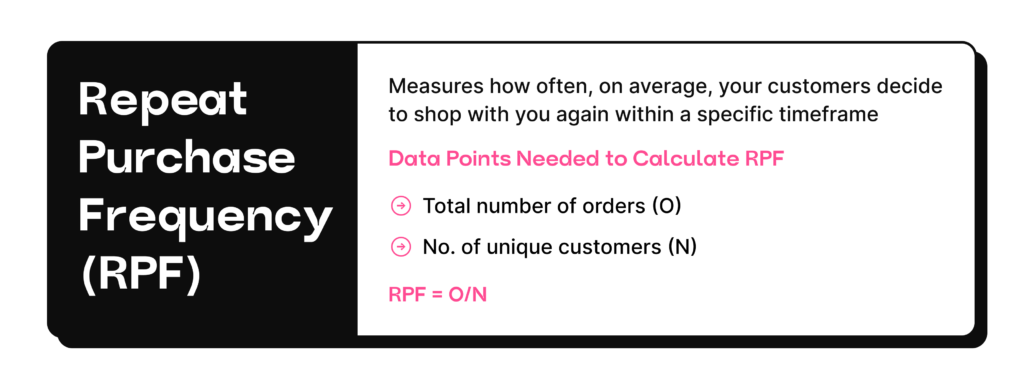
Repeat Purchase Frequency can be measured with the following formula:
RPF = Total number of orders / Number of unique customers
For example, if you had 600 orders last month, and those orders came from 200 unique customers, your RPF would be:
RPF = 600 / 200 = 3
This means that, on average, each customer made 3 purchases from you last month.
The likelihood of a repeat purchase depends heavily on a customer’s post-purchase experience. A customer who has a smooth and enjoyable experience after they buy something from you is much more likely to come back for more.
Some ways to curate a post-purchase experience to ensure customers return for more is by sending follow-up emails with helpful information, providing excellent customer support, offering exclusive discounts and promotions to repeat customers, and making the returns process hassle-free.
Customer feedback
Customer feedback is the information they share with you about their experience with your brand, your products, and your service. This can include reviews they leave on your website or social media, responses to surveys you send out, emails they send to your customer support team, and even comments they make in online forums or communities.
We need to consider post-purchase customer feedback because it gives you valuable insights into what your customers are experiencing after delivery and returns. This is your chance to gain control by understanding what you’re doing well and where you need to improve.
There are a few different ways to measure customer feedback. You can track the number of reviews you receive, the overall sentiment of those reviews (whether they’re mostly positive, negative, or neutral), and the common themes that emerge from the feedback.
For example, you could track the percentage of positive reviews on your product pages, or you could use a tool to analyze the sentiment of customer comments on social media. You could also look for patterns in the feedback you receive, such as multiple customers complaining about slow shipping times or difficulty navigating your website.
Customer Satisfaction Score (CSAT)
The Customer Satisfaction Score (CSAT) measures how satisfied customers are with a specific interaction or experience they have with your brand. This could be anything from purchasing on your website to their post-purchase experience.
CSAT is an important metric when it comes to post-purchase success as customers whose post-purchase expectations are met or exceeded are more likely to be satisfied with their overall experience. This can lead to increased customer loyalty, repeat purchases, and positive word-of-mouth referrals.
You usually measure CSAT with a simple survey that asks customers to rate their satisfaction on a scale. For example, you might ask them to rate their experience from 1 to 5, with 1 being “very unsatisfied” and 5 being “very satisfied.”
To calculate your CSAT score, you simply take the number of satisfied customers (those who gave you a high rating) and divide it by the total number of survey responses.
For example, if you send out a CSAT survey to 100 customers and 85 of them give you a high satisfaction rating, your CSAT score would be 85%.
Post-purchase is part of the customer journey, and measuring CSAT specifically for this stage can give you valuable insights. You could send a CSAT survey after a customer receives their order, asking them to rate their delivery and return satisfaction, impacting the overall experience. Or you could send a survey after a customer interacts with your customer support team, asking them to rate their satisfaction with the support they received when they had an issue with their orders.
Referral Rates (RR)
Referral rates tell you if your customers are happy to recommend your products or services to their friends, family, and colleagues. Referral rates are one of the most tangible measures of customer satisfaction because they demonstrate that customers are so pleased with their experience that they’re willing to put their own reputation on the line to recommend your brand.
A good post-purchase experience gives customers the confidence that they can trust your brand to deliver on its promises, not just with the product itself but also with the entire customer journey. This trust is essential for building strong customer relationships and encouraging referrals.
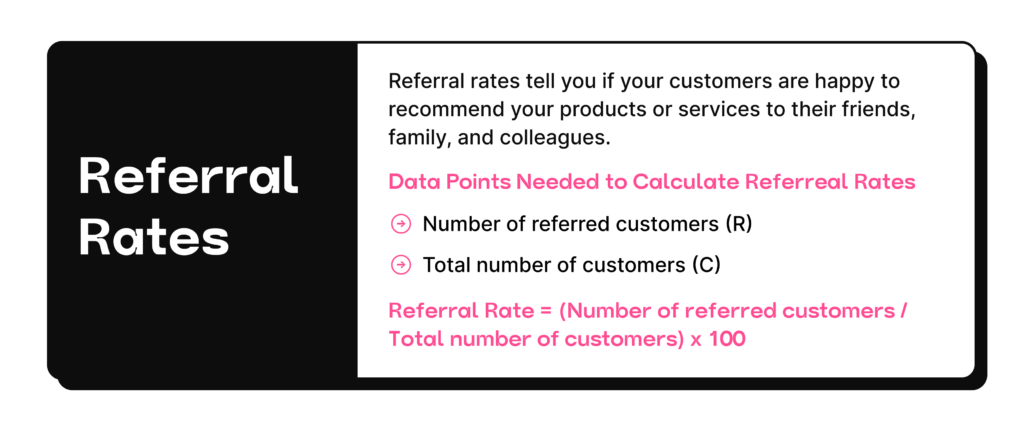
To measure your referral rate, you simply take the number of new customers you’ve gained through referrals and divide it by your total number of customers. The formula for this would be:
Referral Rate (RR) = (Number of referred customers / Total number of customers) x 100
For example, if you gain 30 new customers through referrals out of a total of 300 customers, your referral rate would be 10%.
By tracking your referral rates, you can see how your post-purchase strategy is impacting your word-of-mouth marketing. If your referral rates are high, it means you’re doing a great job of creating a positive experience that encourages customers to spread the word. If your referral rates are low, it might be time to look for ways to improve your post-purchase process and make it even more amazing.
Post Purchase Success with LateShipment.com
The quality of your post-purchase experience has a profound impact on customer lifetime value (CLTV), which essentially dictates the length and value of your association with a customer. A hassle-free and positive post-purchase journey fosters loyalty, encourages repeat purchases, and transforms satisfied customers into brand advocates.
However, effectively managing all these aspects of the post-purchase journey can be complex and time-consuming. That’s where we come in. At LateShipment.com, we simplify the process and empower e-commerce businesses to thrive by offering a comprehensive suite of solutions designed to optimize every stage of the post-purchase experience.
We provide a holistic approach to post-purchase management with our four key product verticals: Delivery Experience Management, Returns Experience Management, Shipping Insurance, and Parcel Audit & Shipping Refunds.
Through its delivery experience management capabilities, LateShipment.com enables businesses to proactively track shipments, identify and address potential delivery exceptions, and provide customers with real-time updates and notifications. This fosters transparency and trust, reducing customer anxiety and enhancing satisfaction.
LateShipment.com also streamlines the returns process with its returns experience management features. By automating returns, providing customers with easy-to-use return portals, and offering multiple return options, LateShipment.com transforms what is often a frustrating experience into a positive interaction.
By leveraging LateShipment.com’s powerful platform, you can elevate your post-purchase experience, enhance customer satisfaction, and drive business growth.




